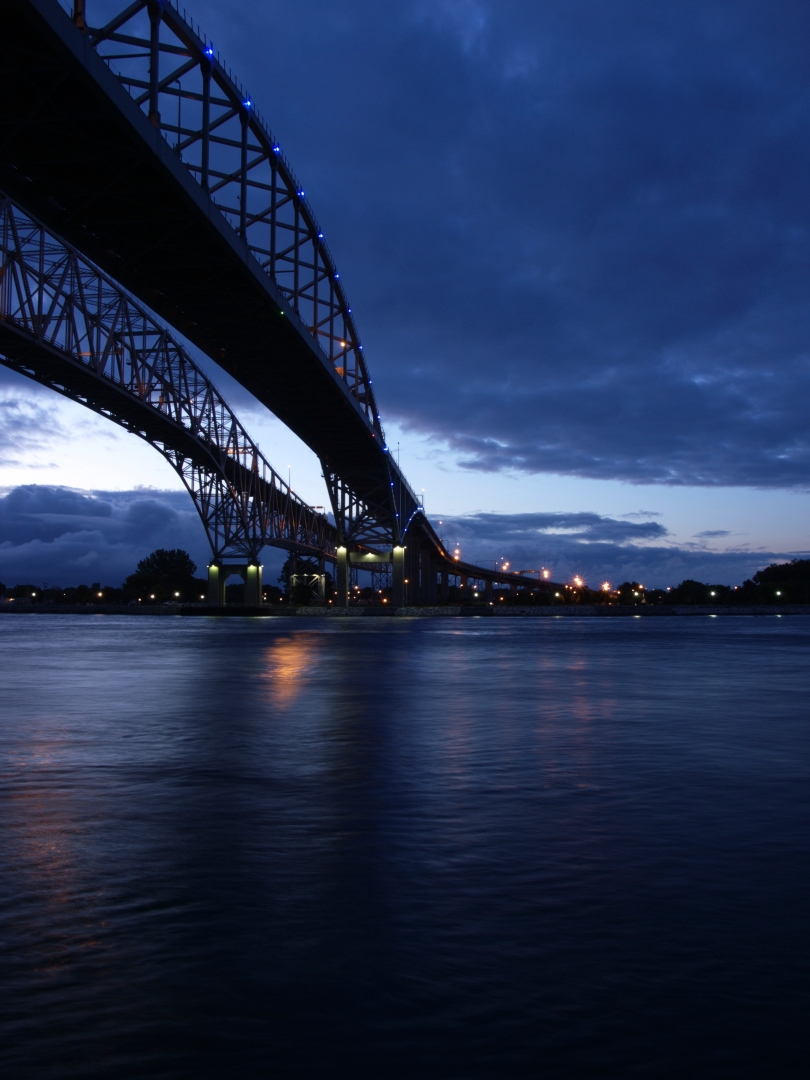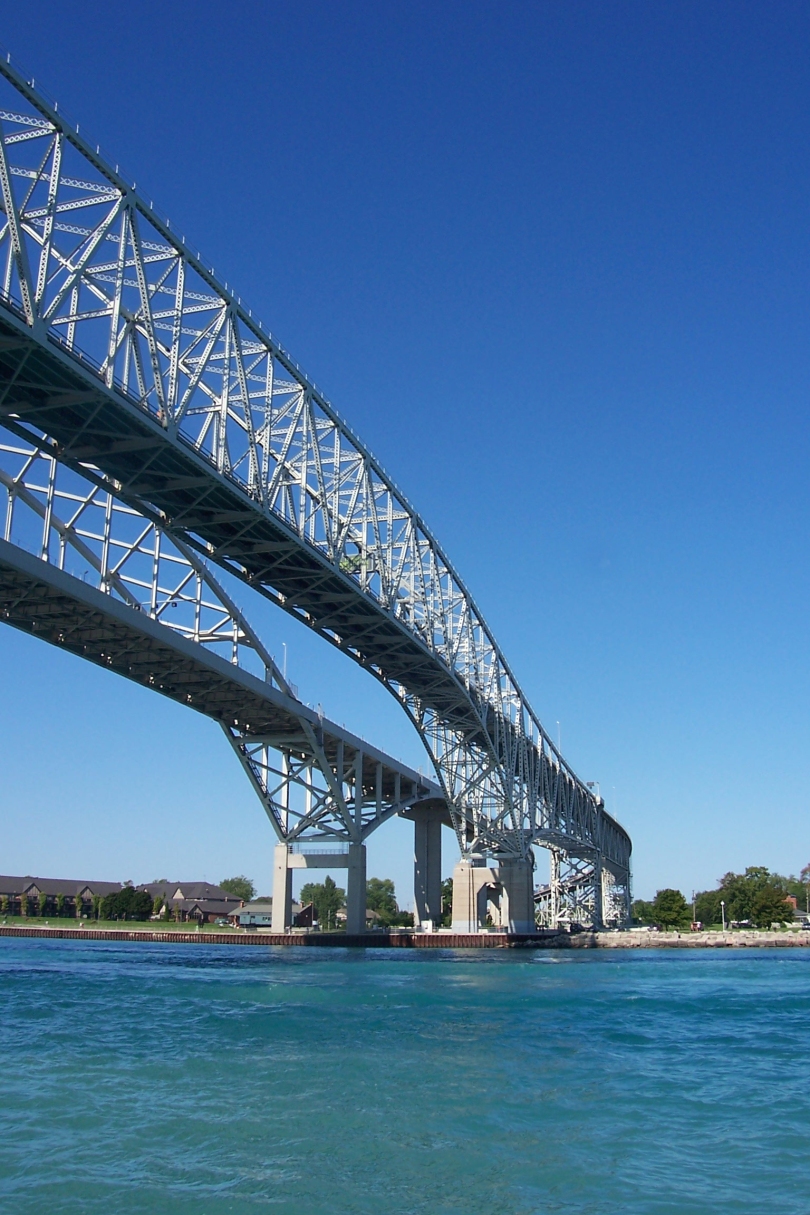
42.9709° N, 82.4249° W
Port Huron, Michigan
Blue Water Bridge
By Dale Hemmila
In 1997, when the second span of the Blue Water Bridge opened, the state of Michigan and the province of Ontario treated citizens on both sides of the United States and Canadian border with a spectacular fireworks display as a part of the grand opening ceremonies.
The absolute highlight of the event, though, was when, in front of thousands of spectators on both sides of the St. Clair River, the Michigan Department of Transportation (M-DOT) and its provincial sister department in Ontario flipped a switch and turned on, for the very first time, the bright blue lights that outline the arced shape of the steelwork that holds the bridge together.
The crowd of thousands audibly gasped in delight.
In the 19 years that have passed, those who drive along the riverfront after sunset are treated to the beauty of the blue-hued lights as they reflect on the river below.
Those who frequently drive along the Thomas Edison Parkway after dark has fallen have noted that the blue lights, for which the bridge is known, occasionally burn out and gaps can be seen between the evenly spaced out blue lights.
Lights out: Is anybody home?
People do call to inquire when the blue lights are burned out, according to Joe McIntyre, maintenance supervisor for M-DOT. According to McIntyre, caring for the blue lights – and the complaint calls when they are burned out – is all a routine part of his job as people focus on what is visible to the public at the bridges. And while a light might be dark, many times the fix is more than just replacing a bulb.
McIntyre and his crew of 16 maintenance professionals work to keep the lights shining and the bridges in good condition in order to keep traffic moving 24 hours a day, seven days a week.
“We’re responsible for everything from the plaza to the middle point of the bridges,” McIntyre said.

And that’s a lot of responsibility for the two spans of more than 6,000 feet in length, which rise above the St. Clair River and accommodate approximately five million vehicles annually travelling between Ontario and Michigan.
Lighting, while just a part of the maintenance charge, is still something that gets serious attention.
“Every other week we follow a pattern circle around the bridges and mark the (lights) that are out,” McIntyre explained. “We then get an aerial truck and fix them, including lights on the walk inside to the decorative lighting.”
That work can usually be done in a day if just bulbs need to be replaced. Workers climb the steel to replace a bulb as needed. But if it can’t be reached by climbing, then MDOT workers use an aerial truck that extends 135 feet to reach lights much higher. Another special vehicle can actually reach down and under the bridge to access lights.
However, if ballasts are out or other complications arise, it can take longer than a day to repair.
That was the case recently when some of the distinctive blue bulbs had gone dark. What affected some of those lights was burned wire in a conduit that needed replacement. And while his crew can do some of the electrical repairs, this project called for a contractor which, due to MDOT regulations, needed to go through a bidding process. And bidding a job and getting contractor approval can sometimes extend the time it takes to make a repair.
Maintenance: An ongoing job
In the meantime, there are maintenance jobs that people can’t see that are important to make certain the bridges and adjacent areas are safe for traffic, employees and visitors. It means a lot of infrastructure work on the north bridge which opened in 1938, and the south span, which opened in 1997.
Maintenance staff does an inspection of the bridges early each year, which leads to prioritizing work such as cleaning the joints, spot painting, greasing bearings and other infrastructure improvements that aren’t visible to the public, but all of which allows both bridges to withstand the challenges of wind, weather and vibrations from vehicle traffic.
That work takes place in all kinds of weather and involves night time duty in the winter to make sure snow is removed efficiently.
While the public may not see all the work that’s done, the job of maintaining the bridge certainly is noticed by MDOT authorities.
“We are very fortunate to have a skilled staff,” said Jocelyn Hall, Bay Region communication representative for MDOT. “They take the safety of the travelling public very seriously and keep all the systems up and running.”

